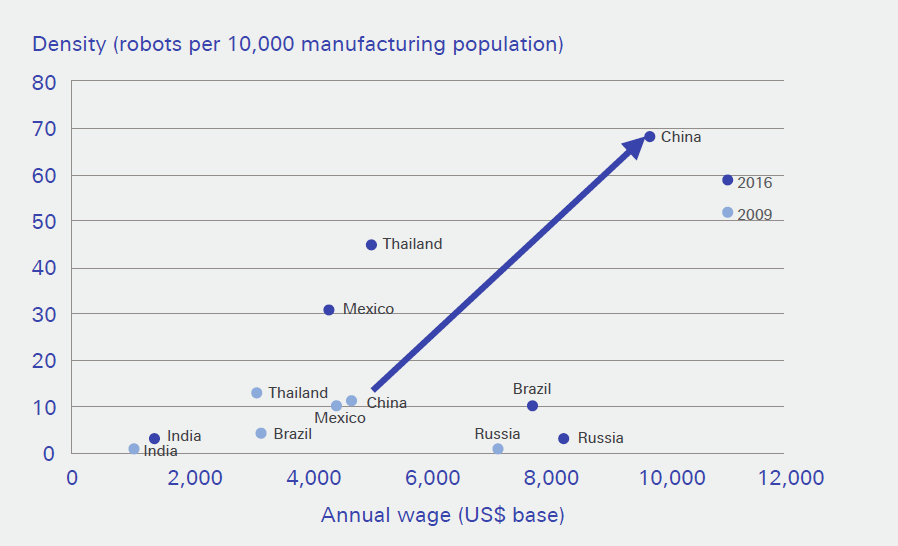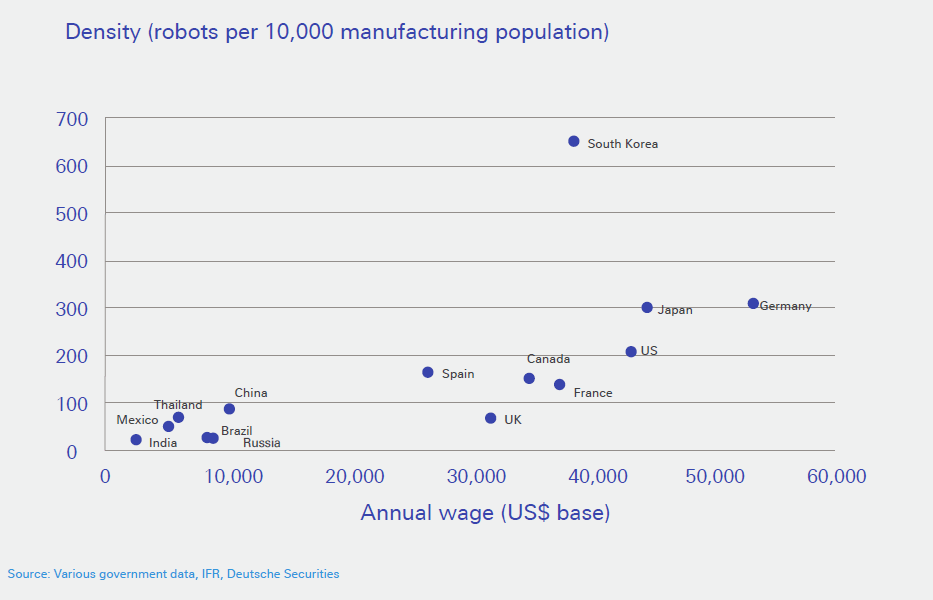Automation is being embraced by many industries across the world. No longer automation simply involved using robots to perform complex physical and dangerous tasks in the industrial sector. Today robots are used not only for physical tasks but also for cognitive tasks according to a report on automation by Deutsche Bank. The author Jim Reid notes the following in the fascinating report:
There are differences with this coming automation revolution. Today’s robots are automating cognitive tasks rather than the physical tasks they have done in the past. But given the weight of historical evidence in favour of automation, the burden of proof should lie on those who argue against automation improving our lives rather their those who embrace it in the hope of higher living standards.
So we say, learn to love your robot colleague. In this edition of Konzept we look at the future of automation from different angles. Our cover feature expands on the macroeconomic discussion but a common thread throughout is that robots and automation will complement humans and make the world a different place. They will not destroy the fabric of work. One statistic to consider: In 1907, Britain had 40,000 cars on the road. By 1939, this had risen to 2,000,000. Today, it is ten times that number. Could robots be the 21st century version of the car?
In terms of robot density China leads the emerging world. Robot usage has grown significantly from 2009 to 2016 as shown in the chart below:
Click to enlarge
In the developed world, South Korea leads in robot density followed by Germany and Japan. US still lags in the use of robots.
Though robot use is growing in China and other developing countries, they still have a long way to go before catching up with the developed world.
Source: Automation – not a job killer, Will I take your job …… or work with you?, June 2018, Konzept, Deutsche Bank
Download Report:
- Automation – not a job killer (in pdf format)
Related:
- The Rise of Robots: Infographic, TFS
- Average Robot Density in Manufacturing Industry by Country, TFS





